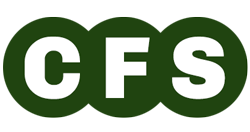IMC's Continuous Feedback System (CFS) breaks down barriers to communication in organizations. The browser-based tool allows members of your organization to log on 24/7 and give their opinion on topics you've selected or that employees have recommended.
 The easy to interpret, real-time graphs will summarize employee feedback by employee type or location to quickly spot trouble areas.
The easy to interpret, real-time graphs will summarize employee feedback by employee type or location to quickly spot trouble areas.
You can watch trends change over time as you make changes. Typical feedback systems provide static data, which doesn't allow you to see the impact of changes as they happen, so you can't course correct.
CFS also creates an online community for an organization's leaders and employees to interact and create solutions for areas that need attention, which is especially valuable for large companies across multiple geographic areas. Leaders and employees can begin discussions to explain what is being done to implement changes or manage expectations.
IMC began developing the Continuous Feedback System (CFS) in 2004 with internal funding; patents for CFS were awarded in the summer of 2004 and the summer of 2008. CFS is intended to fill a void in an organization's communication systems and to provide a mechanism for employees to provide informal feedback to managers and leaders on all aspects of their organization. CFS can be used to remove communication barriers and help identify needed changes in organizational infrastructure, processes, and culture.
Small organizations have very short lines of communication; feedback occurs naturally within these informal, existing lines of communication. Large organizations have too many layers of management for informal feedback to flow quickly from the working ranks to the higher levels of leadership. What leaders should do, but never have time to do, is have face time with every employee once every week or two; most employees "open up" when they have a venue in which they can voice their opinion. Unfortunately, when small problems are recognized within the lower ranks of a large organization's leadership, the management teams are often too busy with immediate, large problems to focus on the process of getting feedback from "the rank and file" and solving what appear to be minor problems. Middle managers and first level supervisors don't, for a myriad of reasons, take action to correct many of these small problems. Small problems then become major problems, which cost a fortune to solve, or they just continue to make the building of products or delivery of services very inefficient.
Formal approaches to gathering employee feedback are most often too structured and infrequent to give leaders a timely understanding of what is right and what is wrong with their organization. Surveys are the most common way to gather feedback from employees. The issues and topics that are the focus of surveys are selected by the leaders and managers – the employees can not often voice their opinion on what they think is important unless they add text based input in the form of "comments." This is both inefficient and often reveals the identity of the employee. To date, attempts to gather and analyze informal feedback using electronic media have been "electronic surveys" or very inefficient, text based, unstructured approaches. Focus groups are another approach to gathering feedback from employees. These are generally very effective, but only gather input from a very few people and can be very expensive.
CFS provides a way to overcome these challenges. CFS is an Internet-based system developed to provide an efficient and timely way to get informal inputs from employees.
-
To be efficient, CFS is structured. CFS uses a structured set of topics, issues and queries that reflect the business processes of the organization. Employees are given the option to select topics from as set of topics that are related to their activities in the organization. An employee can provide feedback on 3 to 6 topics in a minute or two. Leaders and managers can review and analyze feedback from thousands of people in as little as 10 minutes a week.
-
To provide employees the opportunity to anonymously voice their opinion on topics and issues that are important to them, CFS is flexible. CFS provides trend data so leaders can identify when problems are being solved and when they are getting worse. Leaders can identify which processes are experiencing problems, what the major issue or issues are in each troubled process and which group in the organizations is identifying each issue. Most importantly, CFS provides insight into what processes in an organization are working and which are not.
CFS is very valuable in large organizations that have barriers to communication. Large, geographically-dispersed organizations that have trouble staying "in tune" with the "rank and file." Any large organization that is contemplating, or in the process of, a business process reengineering effort would greatly benefit from using CFS to help identify where their processes are in most need of improvement. Large organizations that are merging or going through major reorganizations could use CFS to help them identify problems that could, if left unattended, prevent them from achieving the benefit of the merger or reorganization. Large projects could use CFS to help identify problems before they cause cost and schedule overruns.
To find out more about CFS and to see what it can do for your organization, contact Greg Adams, director of software development.
TODO: The content below was originally in a sidebar; determine what to do with it
What can CFS do for your organization?
Stay ahead of change in your organization and create an environment that employees can enjoy and benefit from while increasing their productivity.
-
CFS provides you with real time data to judge employee thoughts, perceptions, and opinions on any topic you choose.
-
Create action plans to fix issues that need attention and watch opinions change as employees notice your efforts.